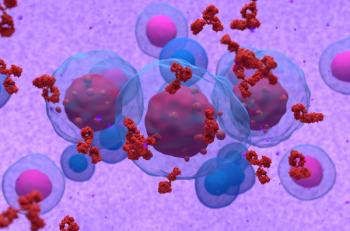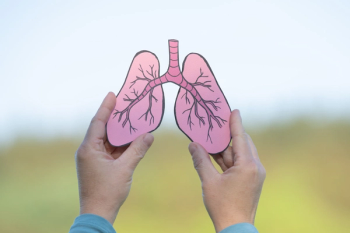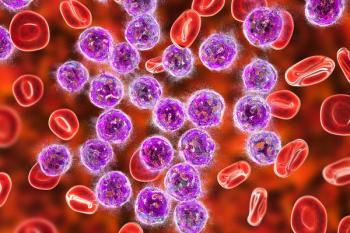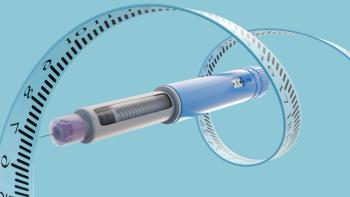
Data Supports Approval of Biosimilar Aflibercept for Diabetic Macular Edema
In May 2024, the first biosimilars for aflibercept were approved, which included aflibercept-jbvf (Yesafili; Biocon Biologics), known as MYL-1701P.
In the INSIGHT (NCT03610646) clinical trial, MYL-1701P, a biosimilar for aflibercept (Eylea; Regeneron Pharmaceuticals Inc), demonstrated clinical equivalence for efficacy, safety, and immunogenicity, to the reference product, supporting the use as an alternative.1
In May 2024, the first biosimilars for aflibercept were approved, which included aflibercept-jbvf (Yesafili, known as MYL-1701P; Biocon Biologics) and aflibercept-yszy (Opuviz; Biogen, Samsung Bioepis). They were both assigned interchangeability status for the reference product. MYL-1701P was originally submitted to the FDA for approval in October 2021 and is now indicated for neovascular age-related macular degeneration and diabetic macular edema (DME).2,3
In the INSIGHT trial, the results support the approval of the biosimilar and is the first to compare the biosimilar with the reference product for DME, according to the authors. According to the study authors, reference aflibercept has shown more effectiveness for DME compared with ranibizumab and repackaged bevacizumab; therefore, investigators aimed to determine the 1-year outcomes of the biosimilar for DME.1
In the study, investigators included 77 clinical centers in 9 countries between August 2018 and September 2021. The design included a 4-week screening period, a 48-week, double-masked treatment period, and 4-week follow-up period. Individuals included were 18 years and older with a type 1 or type 2 diabetes diagnosis and central DME. Further, individuals had no prior anti-vascular endothelial growth factor therapy to either eye.1
Treatment included either 2 mg of MYL-1701P or the reference product via intravitreal injection in the study eye every 4 weeks through 16 weeks, then every 8 weeks through week 48. Further, addition doses were administered beyond week 16 if prespecified Best Corrected Visual Acuity (BCVA) and/or central subfield thickness (CST) criteria were met or if approval was given from medical monitor.1
The primary outcome was mean change in BCVA from baseline to week 8, and secondary end points included mean change in CST from baseline at week 8, cumulative number of study drug injections administered in the 48-week treatment period, mean change in BCVA, mean change in CST, and proportion of individuals who gained 15 letters or more from baseline, according to the study authors.1
A total of 639 individuals were screened for the study, with 324 being randomized for treatment. In total 179 patients were assigned to each group. Approximately 89.9% in the MYL-1701P arm and 89.8% in the reference product group complete week 52.1
At week 8, the mean change for BCVA was 6.60 letters for the MYL-1701P group and 6.56 for the reference product group, meeting the primary outcome in the intent-to-treat population. For secondary outcomes, the mean change in CST was –112 and –124, respectively. The adjusted mean change for both BCVA and CST was comparable between both groups. Furthermore, at week 52, investigators found that the proportion of individuals who gained 15 letters or more from baseline was comparable for 5, 10, and 15 letters.1
There was a mean number of injections of 8.4 and 8.7 through week 48 for MYL-1701P and the reference product, respectively. Further, the incidence of non-ocular treatment-emergent adverse events through week 52 were similar at 65.2% and 65.3%, respectively, with only 3 serious non-ocular events (embolic stroke, cardiac arrest, and brain stem infarction) that were reported as potentially drug related.1
REFERENCES
1. Bressler SB, Barve A, Ganapathi PC, et al. Aflibercept Biosimilar MYL-1701P vs Reference Aflibercept in Diabetic Macular Edema: The INSIGHT Randomized Clinical Trial. JAMA Ophthalmol. Published online September 12, 2024. doi:10.1001/jamaophthalmol.2024.3458
2. Gallagher A. FDA Approves First Biosimilars to Eylea. Pharmacy Times. May 20, 2024. Accessed September 27, 2024. https://www.pharmacytimes.com/view/fda-approves-first-biosimilars-to-eylea
3. Gallagher A. Biosimilars in Retina Space Expected to Grow in 2024, Coming Years. Pharmacy Times. April 10, 2024. Accessed September 27, 2024. https://www.pharmacytimes.com/view/biosimilars-in-retina-space-expected-to-grow-in-2024-coming-years
Newsletter
Stay informed on drug updates, treatment guidelines, and pharmacy practice trends—subscribe to Pharmacy Times for weekly clinical insights.
















































































































































































































